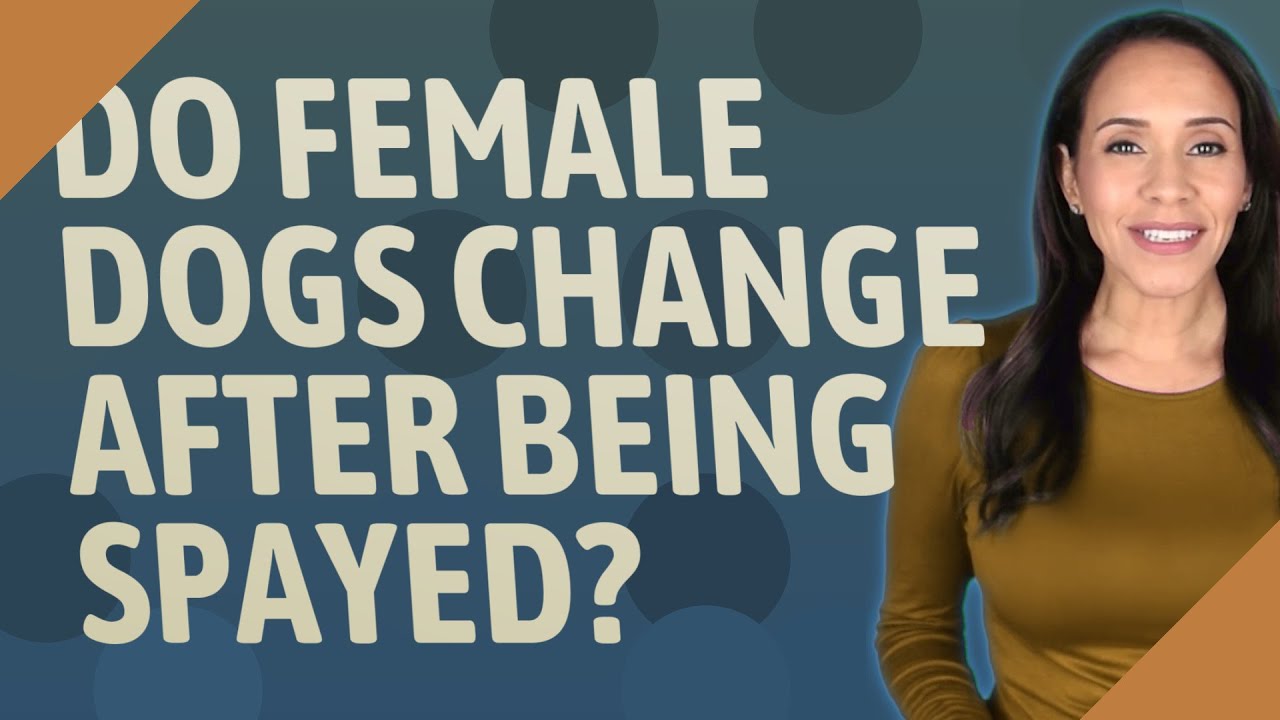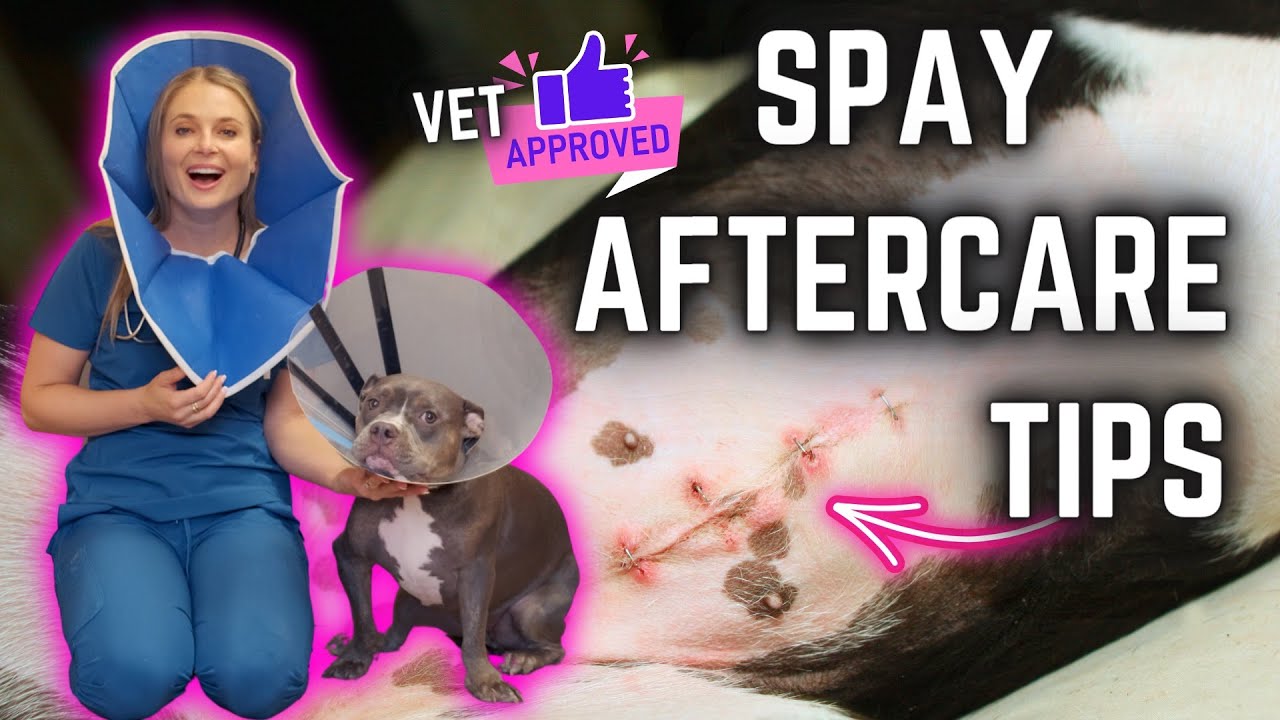Spaying a female dog is a common procedure that can significantly influence her behavior and overall health. After spaying, many owners notice a range of behavior changes, from mood swings to variations in activity levels. Understanding these female dog behavior changes after spaying is essential for pet owners, as it enables them to better adapt and support their canine companions during this transitional period.
Being well-informed allows owners to maintain a healthy bond with their pets. By recognizing the common behavior shifts that follow spaying, owners can prepare for any adjustments necessary in their dog’s routine and overall care. In this article, we’ll cover these changes in depth and offer insights for navigating this pivotal moment in your dog’s life.
## Female Dog Behavior Change After Spaying: Tips & Insights

Reduced Aggression and Anxiety
One significant change often seen in spayed female dogs is a decrease in aggressive tendencies and anxiety levels. Prior to spaying, dogs are influenced by hormones related to their estrous cycles, leading to behavior issues. A study featured in the Journal of Veterinary Behavior supports this claim, highlighting that spayed females are generally more sociable.
Owners frequently report seeing a calmer demeanor in their furry friends after the surgery. This newfound tranquility can benefit social interactions, allowing the dog to interact more confidently with other pets and people.
Changes in Activity Levels
After spaying, dogs may experience a noticeable shift in activity levels. While some may become more relaxed, owners should monitor any drastic drops in energy. If your previously active pup turns sluggish, a review of her exercise routine is in order.
Providing stimulating activities, like interactive toys or engaging walks, can help ensure your dog stays physically and mentally fit. A combination of exercise and mental enrichment can prevent boredom-related behaviors and promote a happy lifestyle post-surgery.
Altered Grooming Behavior
Another behavioral shift that can occur after spaying is an alteration in grooming habits. Research shows that some dogs tend to self-groom less frequently once hormonal influences are subdued.
Understanding that grooming behavior might be learned can shed light on how spaying affects self-care habits. Engaging with a professional groomer familiar with canine behavior can aid in making the transition smoother. This knowledge might also help owners manage any new quirks their pets develop.
Increased Affection and Attachment
Post-spaying, many dogs exhibit greater affection towards their owners. As the hormonal influences that can cause mood swings diminish, dogs often establish more stable emotional connections, leading to stronger bonds.
This increase in affection is a positive change, making the dog more attuned to her owner’s presence. Owners might find their pups cuddling more, seeking out their companionship, and engaging more in play.
Territorial Marking Behaviors
Interestingly, spaying could also lead to heightened territorial marking behavior in some females. As these dogs feel more secure in their environment, they might mark areas confidently.
For pet owners, preparing for these changes is advisable, as adapting to shifts in marking frequency might require modifications in home expectations and training.
2. Unique Considerations and Tips for Managing Behavior Changes
Understanding Is Grooming Behavior Learned in Animals?
Exploring the idea of whether grooming is learned in animals can illuminate how spaying impacts a dog’s self-care. Early social interactions help shape grooming behaviors.
By engaging with a knowledgeable groomer, owners can work towards smoother transitions for their pets. They can learn various techniques to encourage healthy grooming habits that align with the changes following spaying.
Reinforcement Techniques: A Primary Reinforcer for a Person Would Be
Using reinforcement techniques can positively influence your dog’s new behaviors. After spaying, rewarding positive actions like playfulness or lowered anxiety will help foster better habits.
Using treats, such as those from Blue Buffalo, can be particularly effective for encouraging desirable behaviors. When your dog consistently exhibits calmer or more affectionate behavior, don’t hesitate to offer praise and rewards to reinforce her positive transformation.
Managing Changes in Grooming Behavior
Understanding the impact of spaying on grooming habits can help pet owners adapt. If you notice reduced self-grooming in your dog, don’t panic! It might be a normal part of her adjustment.
Regularly monitoring her overall hygiene and consulting with a groomer can help. Remember, a dog that appears less interested in grooming might still need a little extra help from her owner to stay clean and healthy.

3. The Role of Grooming and Alcohol Usage in Behavior Insight
Can Grooming Involve Alcohol to Drink as an Adult?
While discussing behavior changes, it’s essential to address the topic of grooming. Some may wonder, “Can grooming involve alcohol to drink as an adult?” While alcohol isn’t recommended for pets, groomers sometimes use alcohol-based products for sanitization.
However, this practice doesn’t relate to consumption but rather keeping the workspace hygienic. Knowing how alcohol is used can help demystify any misconceptions surrounding grooming practices.
Groomers Using Alcohol to Drink: The Line Between Professionalism and Personal Choice
Exploring the intersection of grooming and the use of alcohol raises important questions. It’s crucial to distinguish between safe practices and personal habits among groomers.
Grooming professionals should always prioritize pet safety, avoiding substances that can impair their ability to care for animals correctly. Understanding the difference between grooming protocols and personal habits ensures confidence in the care your pet is receiving.
Understanding the Changes and Embracing a New Normal
Adapting to changes following spaying can be positive for both pet and owner. By understanding common behaviors and employing effective strategies, you can create a nurturing environment that supports your dog’s transition.
Engaging with professional groomers and familiarizing yourself with grooming standards can deepen your bond with your pet. Ultimately, embracing your dog’s new normal leads to a happier, healthier life for both of you.
As time passes, and as you notice changes in your pet, remember to be patient and observant. Your journey together is just beginning, and with understanding and love, navigating these experiences can create lasting memories.
Female Dog Behavior Change After Spaying: Fun Trivia and Insights
Understanding the Shift
Spaying your female dog isn’t just a responsible choice for population control; it also brings about notable behavioral changes. One of the fascinating facts about female dog behavior change after spaying is that many dogs display a decrease in aggressive tendencies. After the surgery, you might notice that your furry friend becomes more social and less interested in marking territory or roaming. This calming effect is akin to how male cats show different behavior before and after neutering, which also tends to result in a more laid-back demeanor.
Interestingly, some studies suggest that spaying can even affect a dog’s ability to concentrate and focus. This isn’t just speculation; it’s grounded in how hormone levels fluctuate post-operation. Just as the Fido canines shed their wild instincts, spaying can help focus their attention, proving that the relationship between hormones and behavior is pretty profound. And with all that newfound focus, you might even find your pup ready to tackle training exercises with you—talk about a win-win!
Health Benefits and Temperament
Another trivia nugget worth noting is the health impact of spaying. Female dogs that undergo the procedure are at a lower risk of developing certain health issues, including uterine infections or breast tumors. This correlation is critical to understanding female dog behavior change after spaying, as healthier pets generally exhibit more vitality, positively influencing their behavior and mood. So, it’s not just about how they act after spaying; their well-being plays a huge role too.
Speaking of changes, many owners report a noticeable increase in affection post-spaying. A calmer and healthier dog is more inclined to seek out love and companionship. Did you know that the process of spaying can even influence your dog’s bond with you? Treat them right after the surgery, and you might witness a deepening connection, reinforcing the emotional ties between pets and owners. After all, a happy dog means a happy home, and who wouldn’t want that? The stats show that spayed females are less likely to engage in escape behaviors, promoting a safer environment for everyone, whether it’s your backyard or a cozy couch.






